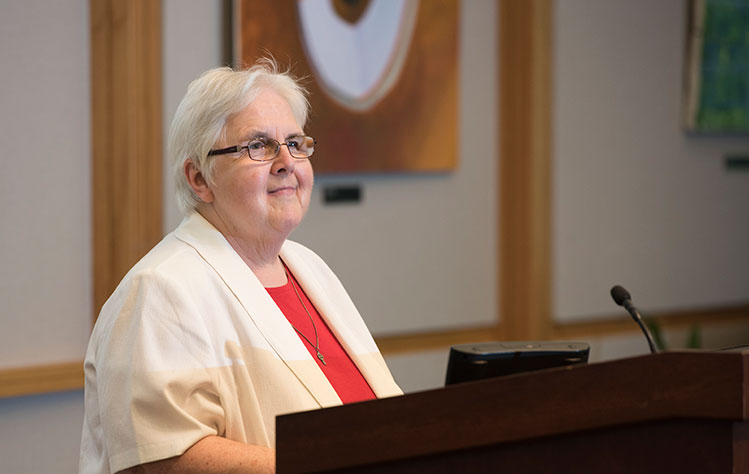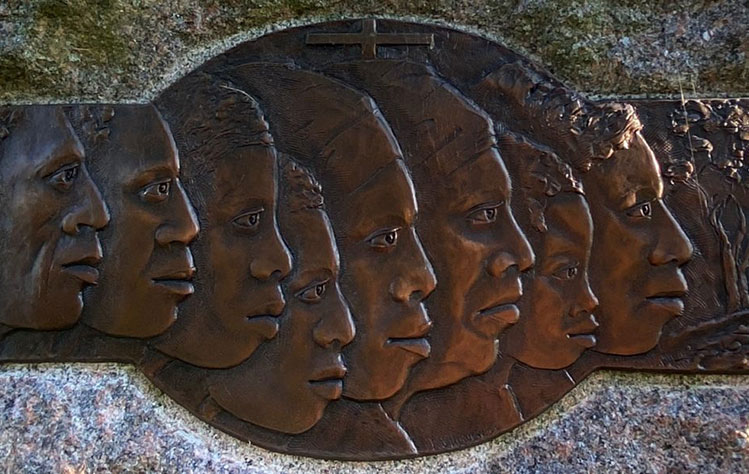Professor Annie Stevens' Original Research Project that Led to Vada Lee Easter
February 01, 2024
 Photo: Professor Annie Stevens delivering a class lecture.
Photo: Professor Annie Stevens delivering a class lecture.
In January 2022, the Sisters of Loretto Community initiated a two-year research project to examine Loretto’s history regarding race, both with African Americans and Native Americans. Professor Annie Stevens served as lead researcher for the Loretto Roots Enslavement Project, investigating Loretto’s participation in the system of enslavement and conducting further research into the persons enslaved and their descendants.
“This project has challenged me to dig deeper into texts, ask questions, listen to the experiences of others, and seek ways to change systems as needed,” Stevens said. “It is also important to recognize the systems in which we ourselves are caught; this leads to thinking about ways that we -- and others -- used the tools at hand to challenge those systems through words and deeds.”
Founded in Kentucky in 1812, the Sisters of Loretto for its first half century participated in the system of enslavement of human beings of African descent. Some early Sisters brought enslaved persons with them to the convent, which they were required by church law to transfer to the religious community. Few records exist of these early years, because of fires and forgotten stories, as the Loretto narrative was written in the late 19th and early 20th centuries to emphasize the story of missionary priest Charles Nerinckx and the westward movement of the Sisters of Loretto with the American frontier.
As Loretto taught African American students, first in “colored schools” and later in desegregated schools -- including Webster University -- questions arose regarding the full history of Loretto, which had attempted to establish a short-lived “Black Sisterhood” in 1824. Inspired by Dr. Martin Luther King Jr., Loretto began a deeper inquiry into the forgotten stories of its own past. In the 1970s, Sister Mary Luke Tobin encouraged Sister Joan Campbell, who taught at Webster in the 1960s and then at Jackson State University in Mississippi during the 1970s, to examine the role of race and enslavement in Loretto history. For over 20 years, Campbell conducted fieldwork research, interviewing local historians throughout the South, and searching archives and government records. Her research revealed names of over 60 individuals enslaved by Loretto in Kentucky, Missouri, and Arkansas. Their names are engraved on a memorial dedicated at the Loretto Motherhouse in 2000. Her book-length manuscript was edited and published after her death as “Loretto: An Early American Congregation in the Antebellum South (2015).”
Stevens was one of the editors of Campell’s book, and that experience served as good preparation for her work on the Loretto Roots Enslavement project. Over the past two years, she has shared her findings with wide audiences via Loretto social media platforms and constructed family trees on the Ancestry.com genealogy website. “To date, I have been in touch with some twenty descendants of the families enslaved by Loretto, deeply moved by those whose lives are closely linked with ours,” she says. “This project is one of the many attempts to remember what has been hidden.”
 Photo: A close up of the Loretto Roots Enslavement plaque currently at the Sisters
of Loretto Motherhouse. Photo courtesy The Sisters of Loretto.
Photo: A close up of the Loretto Roots Enslavement plaque currently at the Sisters
of Loretto Motherhouse. Photo courtesy The Sisters of Loretto.
